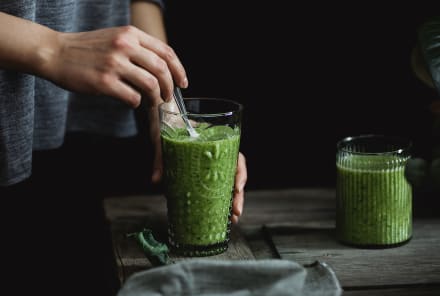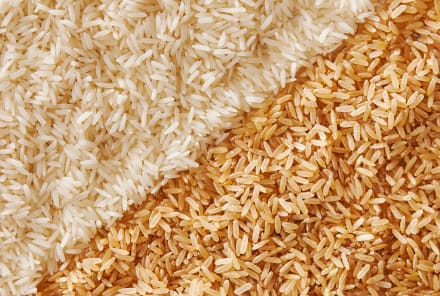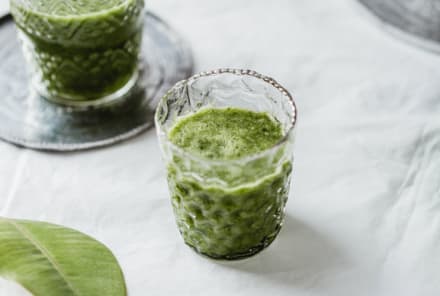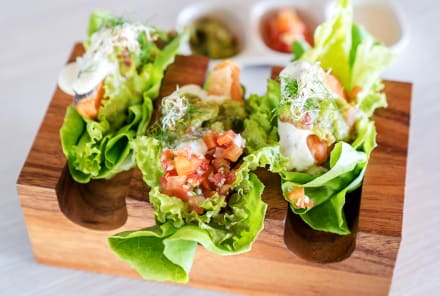Advertisement
An Acupuncturist's Favorite Immune-Supporting Tonic For Winter


Traditional Chinese medicine (TCM) teaches the importance of living in rhythm with nature and in harmony with the seasons.
The stillness and quiet of winter make it a prime time for reflection and rest. As the animal kingdom hibernates to conserve energy once the temperature dips and longer nights begin, we, too, should use this season as an opportunity to slow down, sleep in, and nurture our bodies and souls.
In TCM, winter is the most yin season, and it's associated with the kidney and bladder meridians. These meridians lay the foundation of our overall health, vitality, and reproductive health. The kidney meridian in particular is considered the root of life.
It stores our prenatal Jing, or essence. Prenatal Jing can be defined as our hereditary genetic makeup. It's the finite amount of energy we are born with, as opposed to the postnatal Jing, which comes from the air we breathe and the food we consume. When postnatal Jing is lacking, either due to overstrain or disease, our prenatal Jing is thought to take over and supply the body with energy, like a backup battery pack.
Prenatal Jing only declines with age. In order to delay aging and extend longevity, our work is to conserve this Jing by living a healthy lifestyle and maintaining a nourishing diet.
What to eat to conserve energy through the winter season.
An easy way to recognize foods that are thought to protect Jing is by their color: Many of them are very dark or black. Examples include lentils, seaweed, black sesame seeds, black beans, wild rice, bone broth, oysters, blackberries, and, one of my favorite nourishing foods, the black wood ear mushroom, also known as cloud-ear mushrooms or black fungus (Auricularia auricula).
Though it's relatively new to Western cuisine, this mushroom has been used in Asian cooking for hundreds of years. From a TCM perspective, wood ear mushrooms are healthy for all five major organs: the heart, liver, spleen, lungs, and kidneys.
Research shows that this little mushroom has immune-supporting, anti-inflammatory1, antiviral2, and anticoagulant properties. It's also high in melanin, which can protect your hair and skin from free radicals and UV rays, polyphenols, and micronutrients such as copper and iron, the essential components in red blood cell formation. In a recent study on rats, the potent antioxidant in wood ear also demonstrated liver-protective properties3.
In general, edible mushrooms are high in dietary fiber4 and prebiotic fibers in the form of beta-glucan5. Prebiotic fibers are the precursors in the production of probiotics in the gut microbiome. As we know by now, having a healthy gut microbiome is fundamental to our digestive health, metabolic health, and immune health.
Wood ear mushrooms are available at most health food stores and Asian supermarkets. They're typically sold dry and therefore have a long shelf-life. (Before cooking, you just need to soak dried wood ear in cold water for a couple of hours to rehydrate them.) Their chewy texture and neutral taste make them a versatile ingredient for salads, stir-fries, stews, soups, warming congees, and the following recipe—my favorite winter tonic that's basically dessert in disguise.
Wood Ear and Jujube Tonic
I drink this nutrient-dense tonic to help promote vitality, immunity, and healthy circulation in winter. Light with a mildly sweet flavor, it's the perfect thing to serve at the end of dinner on a cold night.
Prep time: 5 to 10 minutes
Cook time: 1 to 1½ hours
Ingredients:
- ½ cup of rehydrated wood ear mushrooms (Since they are high in copper, overconsumption can potentially result in diarrhea. A little goes a long way!)
- ½ cup of jujube dates, about 10 pieces
- 4 to 5 slices of ginger
- 1½ tbsp. of goji berries
- 1 to 2 tbsp. brown rock sugar
Method:
- Rehydrate about 8 to 10 pieces of dried Wood Ear mushrooms in cold water for a few hours. They should rehydrate to about ½ cup's worth. Wash thoroughly and thinly slice.
- Halve the jujube lengthwise to allow flavor release during the cooking process.
- Add all ingredients to a pot with 6 cups of water, bring to a boil on medium-high, then simmer on low heat for 30 to 60 minutes, uncovered. If using a slow-cooker, simply add all ingredients and cook on medium heat for 1 to 2 hours.
- Add the brown rock sugar 15 minutes before turning off the heat. Serve warm.
Since Wood Ear has a hypolipidemic effect6, those who have blood-clotting disorders or who are on blood thinners should speak to their health care provider before adding it to their diet.
6 Sources
- https://link.springer.com/article/10.5487/TR.2011.27.1.011
- https://www.sciencedirect.com/science/article/abs/pii/S0144861712006200?via%3Dihub
- https://pubmed.ncbi.nlm.nih.gov/26517821/
- https://fdc.nal.usda.gov/fdc-app.html#/food-details/168581/nutrients
- https://www.ncbi.nlm.nih.gov/pmc/articles/PMC5618583/
- https://www.ncbi.nlm.nih.gov/pmc/articles/PMC3763080/
Watch Next
Enjoy some of our favorite clips from classes
Enjoy some of our favorite clips from classes
What Is Meditation?
Mindfulness/Spirituality | Light Watkins
Box Breathing
Mindfulness/Spirituality | Gwen Dittmar
What Breathwork Can Address
Mindfulness/Spirituality | Gwen Dittmar
The 8 Limbs of Yoga - What is Asana?
Yoga | Caley Alyssa
Two Standing Postures to Open Up Tight Hips
Yoga | Caley Alyssa
How Plants Can Optimize Athletic Performance
Nutrition | Rich Roll
What to Eat Before a Workout
Nutrition | Rich Roll
How Ayurveda Helps Us Navigate Modern Life
Nutrition | Sahara Rose
Messages About Love & Relationships
Love & Relationships | Esther Perel
Love Languages
Love & Relationships | Esther Perel











